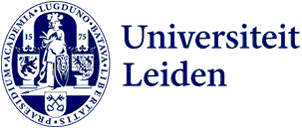Distribution of funds
Much of Leiden University’s income comes from the government and the tuition fee (first income stream). Each year the Executive Board distributes this income among the faculties and institutes. For the sake of transparency, the University applies the First Income Stream Allocation Model. Alongside being distributed in the allocation model, the first income stream also goes towards the budgets of the supporting departments and expertise centres and the work budgets.
What do the faculties and institutes receive?
The faculties and institutes are awarded a budget or university contribution through the allocation model. The Faculty of Science receives a science rate for several variables in the teaching and research sections of the allocation model. This science rate is higher than the sum that the other (arts and humanities) faculties receive. The University contribution is calculated according to four factors:
Allocation Model: teaching
- A standard fixed rate that takes efficiency criteria for the number of degree programmes per faculty into consideration
- A sum per ECTS earned that was funded by the OCW
- A sum per degree earned that was funded by the OCW
- Finally, the faculties receive a growth contribution equal to the tuition fee, for the possible growth of the number of (EEA) students and a contribution per student within the framework of the quality agreements (OCW) resources.
Allocation Model: research
- A 27% research supplement on the education compartment, excluding growth contribution and quality agreements, comprising a basic section worth 10% and a policy section worth 17%
- A sum per PhD degree awarded (3-year average)
- Second income stream allowance/EU (based on the number of FTE academic staff/EU
Specific allocations in the Model
- Sums earmarked for specific tasks
Sum from central innovation fund
- The Executive Board has established an ‘innovation fund’ to encourage innovation in teaching, research and organisational management.
What do the supporting departments and expertise centres receive and how much are the work budgets?
As well as being used in the allocation model, the first income stream is used for the budgets of the supporting departments and expertise centres and the work budgets. A ‘Cost Management Infrastructure Standard’ is relevant to the University contribution for these departments. This indicates that the total financial framework for the supporting departments and work budgets must remain the same: a plus at one expertise centre automatically leads to a minus at another. The average total University contribution for the supporting services, expertise centres and work budgets (excluding the Real Estate Directorate) may not exceed 35% of the expected University contribution for the faculties and institutes.
This is how money is allocated within the University
Due to the selected cookie settings, we cannot show this video here.
Watch the video on the original website or